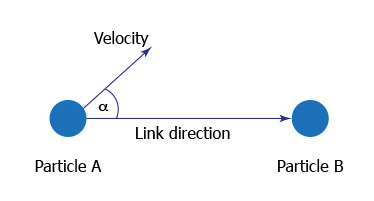...
- Create a sufficient amount of initial particles. The more particles, the better the splash.
- If the splash looks torn increase “Crown width”. This helps to attract more particles and make the splash “thicker”.
- The "Crown" daemon has an internal a hole-filling ("Sheeter") function that prevents the fluid from being torn. The settings are exposed in the "Sheeter parameters" section.
- Simulations with the "Crown" daemon cannot be → retimed.
...
In order to get a “thicker” splash, please increase the parameter's value. The value is measured in metres.
Min cavity size
Holes with a radius greater than the given value will not be filled. This parameter accepts positive values and is dimensionless. The daemon does have its limits, and there are situations where it is impossible to fill all holes. This, for example, can be the case when the fluid particles are very fast or when the holes are large. Good values range between 1.0 and 3.5, but this strongly depends on your simulation.
Use velocity alignment
This feature improves the quality of simulation with thin sheets of fluids, e.g. with the “Linear” emitter. Another situation is when particles collide with objects. In the object's corners you can often see accumulations of particles. To avoid this, increase the “Alignment threshold” angle.
Alignment threshold
Particle A is moving at a certain velocity which also determines its direction – this is the motion vector. Another vector points in the direction of particle B. The angle (α) between both vectors is compared against “Alignment threshold”. If this angle is smaller than the given parameter value then a new particle will be created between A and B. The following illustration explains this concept:
Use relative speed
By taking the particles' speed into account you are able to do a lot of interesting things:
- Restrict the particle creation process to particles within the given range between “Min |Max relative speed”. This way you can create fast moving, trailing drops which are not linked to the main body of fluid.
- If a particle is very fast compared to its neighbour then you might see very long and thin tendrils. By defining a “Max relative speed” value you are able to break the link between these particles.
- Another situation where it is helpful to define speed thresholds is when one particle is moving, while its neighbour is colliding and suddenly stopping. Normally, you do not want the “Sheeter” to fill the gap between this particles. When the moving particle's speed is greater than “Max relative speed” the gap will not be filled.
Min relative speed
Only particles with a velocity greater than the given value will be taken into account for the hole-filling process. Please also read the descriptions under “Use relative speed”. This parameter is measured in metres per second.
Max relative speed
Only particles with a velocity smaller than the given value will be taken into account for the hole-filling process. Please also read the descriptions under “Use relative speed”. This parameter is measured in metres per second.
Use age
This feature is used to break up the fluid at a certain point in time. Switch this option to “Yes” to make use of the associated “Max age” value.
Max age
When the “Use age” option is active you can specify an age in seconds. Only particles with an age smaller than the given value will be used for the hole-filling process.
Cavities detection ratio
With 1.0 all of the detected holes will be filled – this corresponds with 100%. A value of 0 means that the hole-filling process is disabled. This can be interesting if you only want to create tendrils, but do not want to fill the space between the trailing particle and the main body of fluid.
EDIT
The daemon's editing features allow you to create a wide variety of shapes, and you are not restricted to regular splashes with perfectly aligned tendrils. When the daemon is in edit mode you will see a yellow frame around the viewport. Then you have access to the editing points and spline handles. Please press the W key to move the points. Rotation (E) and scaling (W) are available for multiple selections of points.
- By shifting the viewport gizmo's editing points it is possible to create a wide variety of cross sections.
- Bottom and top can be edited and deformed separately to control the splash's width and shape. These editing points provide spline handles for changing the crown's curvature. The splash's edge will then follow this line.
- The “displaced” editing points are used to change the height of the tendrils – their number can be defined under “Spikes count”.
- Multi-selection of editing points is possible.
- The number of crown points (4 for the bottom, 4 for the top) is fixed and cannot be changed.Click here to get to the → “Crown Daemon” quick start tutorial.
